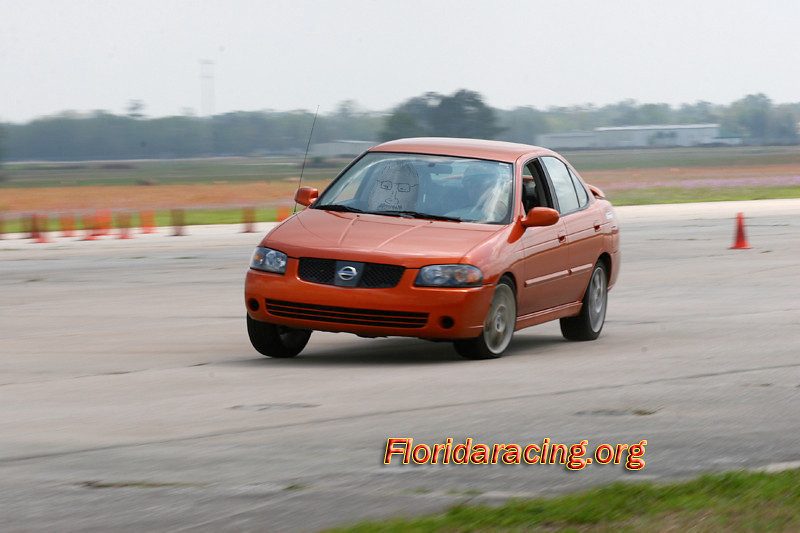The advantage to a lower ride height is less body roll. The disadvantage to a lower ride height is not enough body roll and reduced traction on bumpy sections of tracks.
I've driven a few slammed tunes and here's what I don't like
* Poor braking, especially trail braking. The front tires lack grip entering turns because you cannot use your momentum and the brake pedal to shift weight forward onto the front tires.
* Poor grip over rumble strips, curbs, and uneven pavement. With a softer suspension you can drive over edges of the track under full throttle without worrying about what will happen. With a low stiff suspension you typically have to avoid touching the curbs entirely.
Most of my tunes use default height or at most -10. I will run slightly stiffer springs and dial down body roll with the rollbars. This still gives me the ability to trail brake because the nose will still dip under heavy braking.
The only time i venture lower than -10 is when I am using downforce and racing tires.
This is inline with how i have experienced things, however i still try to lower cars as much as possible (because it suites my driving style). Sometimes i'll do this:
-calculate the spring rate ratio
-calculate the maximum spring rate that can be achieved without deviating from the desired spring rate above.
On some cars you can not make the springs hard enough to compensate for the amount that you have lowered the car - you must bare in mind the units of springrate kgforce per mm. So for every mm you lower the car you must increase the springrate.
You can test this: Take a default setting and drop it to minimum ride height and watch the nose of the car dive under braking. This is because the springs are no longer stiff enough for the job.
So once you have found the optimal minimum ride height and stiffened the springrate to account for this you need to take further steps to compensate for lowering the car.
-stiffen the bump and rebound as the suspension travel is much less so the dampers have to be stiffened as well.
-Now that the car is very stiff the car will respond faster in terms of handling, but the window that you have to work with is smaller - you have to be more precise and on the money with everything. The reason that the car responds faster is that the roll moment is smaller - there is less body roll. So to reflect this you must experiment and reduce camber on the wheels. If you had a higher ride height and a softer setting for say nurburgring you may have had camber on the front around 2.0-2.5 degrees but this must be reduced in a stiffer setup as the car is not going to roll enough to need this much camber.
-Another issue is tyres: very stiff setups can exceed the performance of low grade tyres.
So the limiting factors are springrate (whether the car can go stiff enough for its minimum ride height) and tyres, (whether the tyre can withstand the force place upon it by the stiffly sprung setup.
Dampers and camber are fine tuning; Apply anti rollbars to keep force equally placed on tyres from left to right.
If you do these things then you should get a pretty tight car and will not be affected by bumps as badly as you'd expect. You will be compromised by steep curves (like you get on grand speedway) if the wheel does not hit the bump square on, however, the car will respond so much more quickly that you can drive on the track and not have to resort to going off road. Unfortunately this type of setup doesn't always work in timetrials as you can't exploit the track fully.
Still on other tracks it works just fine.
edit:
Yes, Praiano63 you're right, if the camber is high then the tyre contact area to the ground is small and if the tyre doesn't provide enough force on entering a corner then the car won't roll over onto the tyres full surface area properly. This issue is magnified on tracks like nurburgring where the track goes off camber on some corners and/or is very bumpy. In this case its better to have less camber so that you can try and maintain full surface area contact with the tyre and road as often as possible.
In addition to this, large differences in camber on the front and rear of the car can cause the car to be come unstable. This is because whilst the front tyres may have maximum surface contact to the road in a corner and the camber on the back of the car is too different then at that moment the rear wheels will probably not have maximum surface contact to the road. Sometimes this can be sorted by clever tuning like lewis_hamilton's 1989 Nissan GTS-T tune for the recent 1989 Tsucuba timetrial. (i've tested very few tunes - i'm new to GT5)
Lastly it should be noted that even if you do make a setup with racing softs and have everything setup well for a high camber setup then you may end up with a tune that works VERY well on a few corners but will be unstable or handle poorly on others.
 , just mentioning some possibilities.
, just mentioning some possibilities.
